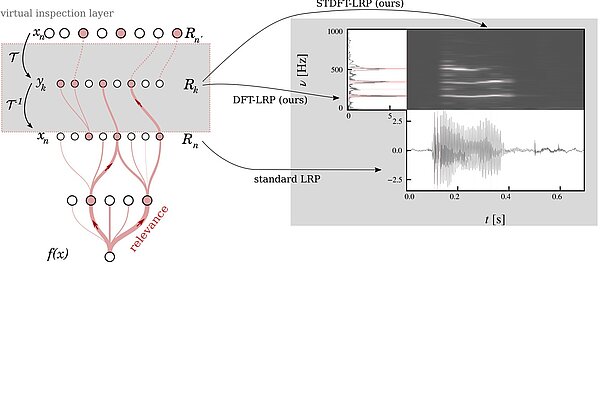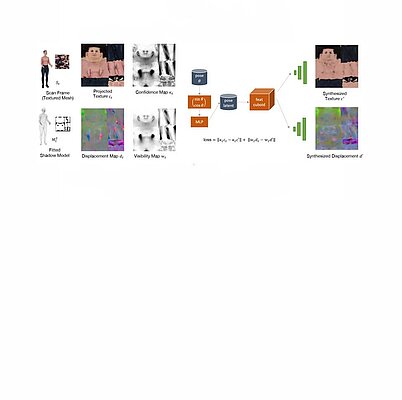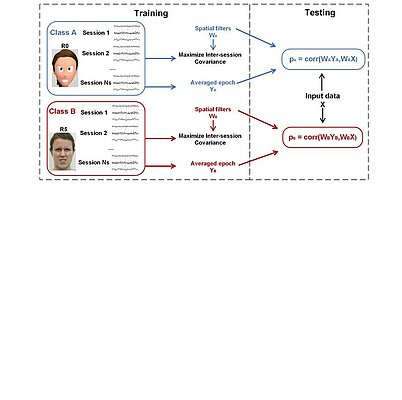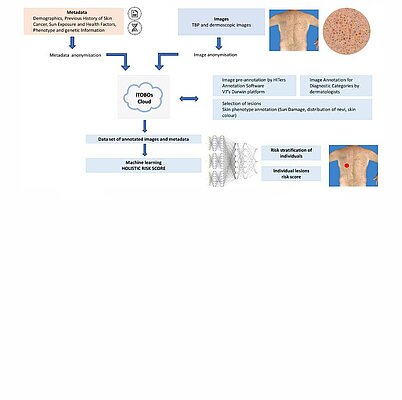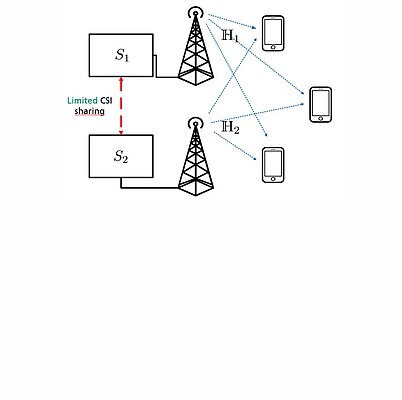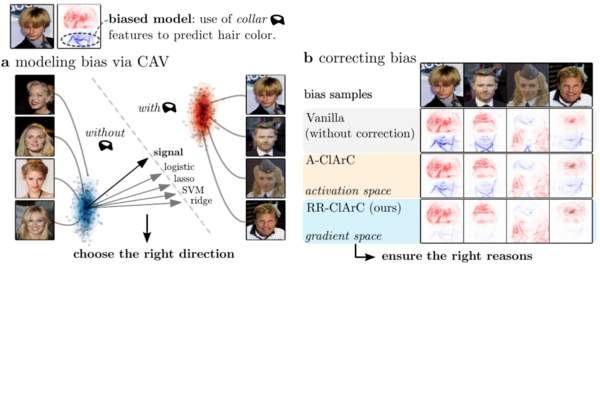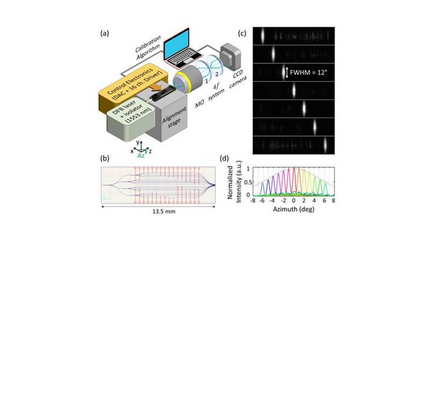Explainable AI for Time Series via Virtual Inspection Layers
For time series data, where the input itself is often not interpretable, dedicated XAI research is scarce. In this work, we put forward a virtual inspection layer for transforming the time series to an interpretable representation and allows to...
Dynamic Exposure Visualization of Air Quality Data with Augmented Reality
This paper introduces a new concept and outlines the implementation of an AR application designed for mobile devices. It can visualize real-time environmental data from various Open Data platforms. The scientific contribution lies in diverse...
Time-bin entanglement at telecom wavelengths from a hybrid photonic integrated circuit
We present a fiber-pigtailed hybrid photonic circuit comprising nonlinear waveguides for photon-pair generation and a polymer interposer reaching 68 dB of pump suppression and photon separation based on a polarizing beam splitter with > 25 dB...
Channel Charting for Beam Management in Sub-THz Systems
Sub-THz communication, vital for 6G, requires densification and multi-connectivity to overcome signal blockage. Efficient beam and user scheduling are crucial. We propose a low-complexity scheduling scheme using machine learning (ML), employing a...
BiSPARCs for Unsourced Random Access in Massive MIMO
This paper addresses the massive MIMO unsourced random access problem in quasi-static Rayleigh fading. Our proposed coding scheme combines an outer LDPC code with an inner SPARC code, integrating channel estimation, single-user decoding, and...
Animatable Virtual Humans: Learning pose-dependent human representations in UV space for interactive performance synthesis
We propose a novel representation of virtual humans for highly realistic real-time animation and rendering in 3D applications. We learn pose dependent appearance and geometry from highly accurate dynamic mesh sequences obtained from...
Realness of face images can be decoded from non-linear modulation of EEG responses
We utilized an EEG dataset of steady-state visual evoked potentials in which participants were presented with human face images of different stylization levels. Assessing neuronal responses, we found a non-linear relationship between SSVEP...
A protocol for annotation of total body photography for machine learning to analyze skin phenotype and lesion classification
AI has proven effective in classifying skin cancers using dermoscopy images. However, clinical application is limited when algorithms are not well-trained, or there is a lack of clinical context (e.g., medical history). The increasing use of...
UL-DL Duality for Cell-Free Massive MIMO With Per-AP Power and Information Constraints
This article advances the theoretical foundations of user-centric cell-free massive MIMO networks. In particular, by means of a novel UL-DL duality principle for fading channels, it settles the optimality of the recently developed “team MMSE”...
Towards an AI-enabled Connected Industry: AGV Communication and Sensor Measurement Datasets
We present iV2V and iV2i+, two machine-learning datasets for industrial wireless communication. The datasets cover sidelink and cellular communication involving autonomous robots together with localization and sensing data, which can be used to...
Signal separation in radio spectrum using self-attention mechanism
Traditional signal processing methods often fall short compared to data-driven approaches in a signal separation problem that involves co-channel signals, where the energy content of the interference component overlaps with the transmitted signal...
Comparison of Sub-THz Radio Channel Characteristics at 158 GHz and 300 GHz in a Shopping Mall Scenario
This paper compares the sub-THz radio channel characteristics at 158 GHz and 300 GHz in a shopping mall scenario by extracting three different path loss models and various channel parameters.
From Hope to Safety: Unlearning Biases of Deep Models via Gradient Penalization in Latent Space
We present a novel method ensuring the right reasons on the concept level by reducing the model's sensitivity towards biases through the gradient. When modeling biases via Concept Activation Vectors, we highlight the importance of choosing robust...
Sparse Aperiodic Optical Phased Arrays on Polymer Integration Platform
Solid-state optical beam-steering utilizing polymer waveguides as edge emitters to form optical phased arrays (OPAs) with aperiodic spacing for operation at 1550 nm is demonstrated for the first time. Power consumption of 1.28 mW/? per channel is...
Polymer Waveguide Sensor Based on Evanescent Bragg Grating for Lab-on-a-Chip Applications
This work integrates an evanescent Bragg grating sensor into a polymer waveguide with microchannels. The sensor, built with epoxide-based polymers, is characterized through chemical applications. Temperature sensitivity is demonstrated (-47.75...
Little or No Equalization is Needed in Energy-Efficient Sub-THz Mobile Access
We validate experimentally the claim that, in sub-THz mobile access networks, single-carrier or low-number-of-subcarriers modulations are very attractive competitors to the dramatically more complex and energy-inefficient traditional...
Multispectral Stereo-Image Fusion for 3D Hyperspectral Scene Reconstruction
We present a novel approach combining two calibrated multispectral real-time capable snapshot cameras, covering different spectral ranges, into a stereo-system. Therefore, a hyperspectral data-cube can be continuously captured. The combined use...
Towards Better Morphed Face Images Without Ghosting Artifacts
We propose a method for automatic prevention of ghosting artifacts based on a pixel-wise alignment during morph generation. We evaluate our proposed method on state-of-the-art detectors and show that our morphs are harder to detect, particularly,...
Generative Texture Super-Resolution via Differential Rendering
We propose a generative deep learning network for texture map super-resolution using a differentiable renderer and calibrated reference images. Combining a super-resolution generative adversarial network (GAN) with differentiable rendering, we...
Animating NeRFs from Texture Space: A Framework for Pose-Dependent Rendering of Human Performances
We introduce a novel NeRF-based framework for pose-dependent rendering of human performances where the radiance field is warped around an SMPL body mesh, thereby creating a new surface-aligned representation. Our representation can be animated...
